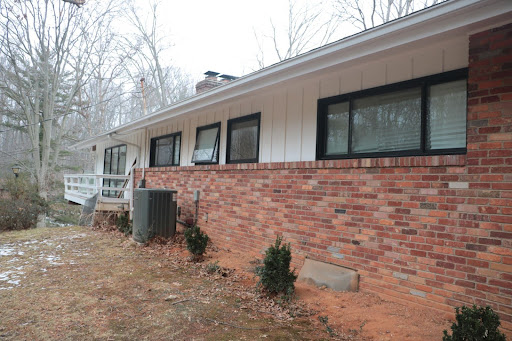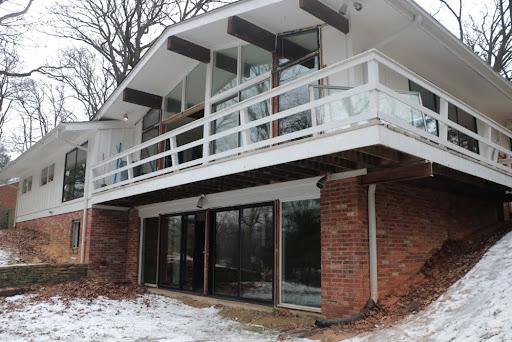As the temperature drops and the first snowflakes fall, the warmth and comfort of your home become paramount during the winter season. One often overlooked factor is the windows in your house. The choice of windows plays a crucial role in determining not just the aesthetic appeal of your living space but also its energy efficiency and overall comfort.
In this blog post, we'll explore the process of selecting the best windows for cold weather and delve into how they can impact your energy bills (and well-being) during the winter months.
Understanding the Different Types of Windows
When it comes to choosing the best windows for cold weather, it's crucial to understand the different types available, as well as how they can impact the insulation and energy efficiency of your home. In this section, we will explore three key aspects: the number of panes, the materials used, and energy-efficiency ratings.
Single-pane Vs. Double-pane Vs. Triple-pane Windows
Single-pane windows consist of a single sheet of glass and are the most basic. They offer minimal insulation, making them less suitable for cold climates. Because cool air can more easily penetrate through, heat may also escape — resulting in drafty and less comfortable indoor spaces.
On the other hand, double-pane windows have two layers of glass separated by a space filled with air or gas. This design offers better insulation than single-pane windows. The air or gas acts as a barrier, reducing heat loss and cold air infiltration. Double-pane windows are a significant improvement for homes in colder regions, but there's an even more energy-efficient option.
Triple-pane windows are the most advanced and energy-efficient choice for cold climates. They contain three layers of glass in addition to two insulating spaces filled with air or gas. This design offers superior insulation, keeping heat loss to a minimum. Triple-pane windows excel at maintaining a comfortable indoor temperature and preventing drafts, making them ideal for extremely cold climates.
Best Window Insulation for Cold Weather
The material of your window frame is another crucial factor in determining its insulation properties. As you explore your options, keep in mind that different materials have varying levels of insulation and durability.
Wood window frames provide excellent natural insulation. They have a warm and classic appearance that many homeowners appreciate. However, wood frames may require more maintenance, such as painting and sealing, to protect them from the harsh effects of cold weather (i.e. shrinking or letting in drafts).
Vinyl window frames are popular for their low maintenance and affordability. They offer good insulation and resistance to condensation; this makes them an excellent choice for cold climates, as they can withstand extreme temperatures.
Next, you've got fiberglass. Fiberglass frames are known for their strength and durability. They are highly resistant to temperature changes and provide excellent insulation. These frames are a reliable option for cold weather, and they require little maintenance.
Aluminum frames are another option, both lightweight and durable. While they are not as insulating as other materials, they can be thermally improved with added insulation.
However, in extremely cold climates, aluminum frames may not be the best choice without proper thermal breaks. This type of insulation forms a connected barrier between the inside and outside of a window frame, made to prevent thermal energy loss.
Energy Efficiency Ratings (U-Factor and R-Value)
Of course, understanding the energy efficiency ratings of windows is just as important when determining the best windows for cold weather. Two key metrics are commonly used to assess a window's performance in insulating your home: the U-factor and the R-value.
Let's begin with the U-Factor, which measures the rate of heat transfer through a window. Lower U-Factor values indicate better insulation. When choosing windows for cold weather, look for those with a low U-Factor, as they will minimize heat loss and keep your home warmer.
The R-value represents a window's resistance to heat flow. Higher R-values indicate better insulation. In this case, windows with a higher R-value are preferred. These models will help maintain a comfortable indoor temperature by resisting heat loss.
Other Factors to Consider When Choosing Windows for Cold Climates

In addition to the U-Factor, R-Value, and frame materials discussed earlier, several other factors can significantly impact your choice of windows for cold climates.
Low-E Glass Coatings and Their Benefits
Low-E (low-emissivity) glass coatings have revolutionized the way windows perform in terms of energy efficiency. These thin, nearly invisible coatings are applied to the glass surface, altering its reflective and emissive properties.
Low-E coatings are designed to reflect infrared radiation, which is responsible for heat transfer. They allow visible light to pass through while reflecting heat, ensuring that heat remains inside your home during cold weather. By reducing the amount of heat that escapes your home, Low-E coatings make your space more energy-efficient.
Plus, these coatings help maintain a consistent indoor temperature, reducing the need for constant heating — and minimizing the occurrence of condensation on the glass. Low-E coatings can also block harmful UV rays, preventing your furniture and interior decor from fading over time.
Gas Fills: Argon and Krypton for Better Insulation
Some advanced energy-efficient windows use gas fills like argon and krypton to further enhance insulation. These gasses are denser than air, reducing heat transfer and improving a window's overall performance.
Argon is a colorless, odorless gas that is commonly used to fill the space between double or triple-pane windows. It is less conductive than air, providing an additional barrier against heat loss. Argon gas fills contribute to improved insulation, making them a popular choice for windows in cold climates.
Krypton is an even denser gas compared to argon and offers superior insulation. It is often used in high-efficiency, triple-pane windows. Krypton-filled windows are known for their outstanding thermal performance and are particularly suitable for extremely cold climates.
Window Styles
The choice of window style also plays a role in how well your windows insulate your home. You'll want to think about the energy efficiency of these different styles, but you'll also need to consider the aesthetic of your home to match your design.
Let's begin with casement windows, which are known for their excellent insulation. When closed, they create a tight seal that minimizes drafts and heat loss. This makes them a fantastic choice for cold climates, as they can help maintain a comfortable indoor environment.
Double-hung windows can provide good insulation when properly sealed and maintained. They offer the flexibility of opening either the top or bottom sash, which can be beneficial for ventilation without compromising insulation.
Sliding windows may not offer the same level of insulation as casement or double-hung windows. However, with high-quality frames and glass, they can still be energy-efficient. Keep in mind that proper sealing and maintenance are key to maximizing their insulation capabilities.
The Best Window Options for Cold Climates
With all the options and styles out there, it is easy to feel a bit overwhelmed when narrowing down the best windows for cold weather. Ultimately, the right fit for you may depend on the performance of particular models, as well as understanding the pros and cons of each window type.
Specified Models and Brands
The good news is there are many high-quality models out there, distributed by some of the most established names in the industry.
For example, Marvin's window models are a popular choice for cold climates. Their catalog includes a wide assortment of fiberglass, which is highly resistant to temperature changes and offers exceptional insulation. Marvin's commitment to sustainability and energy efficiency is reflected in every one of their products.
ProVia is another excellent option for homeowners seeking a dependable model. Their line of Endure vinyl windows is fully customizable, complete with Energy-Star certification and unparalleled curb appeal.
Pros and Cons of Various Window Types
Because each window model is unique, there are several factors to think about when weighing your options.
Double-Pane Windows
Pros: Double-pane windows offer better insulation compared to single-pane windows. They are a cost-effective choice for moderately cold climates and provide a significant improvement in energy efficiency.
Cons: In extremely cold regions, double-pane windows may not provide enough insulation to prevent heat loss effectively.
Triple-Pane Windows
Pros: Triple-pane windows are ideal for very cold climates, offering superior insulation. They are highly effective at reducing heat loss and preventing drafts.
Cons: Triple-pane windows tend to be more expensive than double-pane options, and the additional weight may require sturdier framing.
Fiberglass Frames
Pros: Fiberglass frames are exceptionally durable and resistant to temperature fluctuations. They offer excellent insulation and minimal maintenance.
Cons: Fiberglass windows can be more expensive than other frame materials, but their long-term benefits often outweigh the initial cost.
Vinyl Frames
Pros: Vinyl frames are affordable and provide good insulation. They are low-maintenance and resistant to condensation.
Cons: In extremely cold climates, vinyl frames may not offer the same level of insulation as fiberglass or wood.
Low-E Coatings
Pros: Low-E coatings improve energy efficiency, maintain consistent indoor temperatures, and reduce heating costs. They also protect your home's interior from UV radiation.
Cons: The added cost of Low-E coatings may increase the initial investment in your windows, but the long-term savings make it a worthwhile choice.
Warm up with Hodges!
Here at Hodges, we pride ourselves on providing our customers with only the best in energy efficiency and performance. Contact us today for a free quote — and upgrade for the winter ahead!



